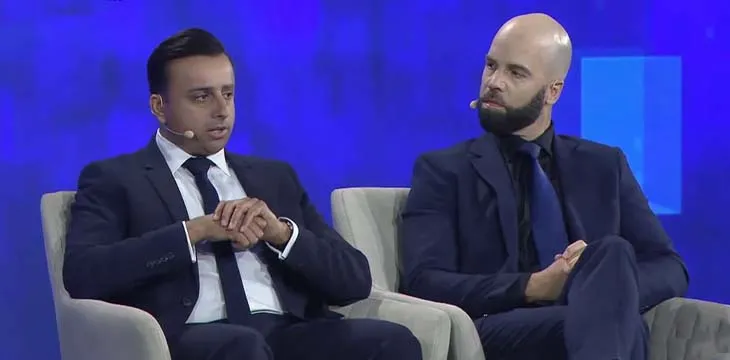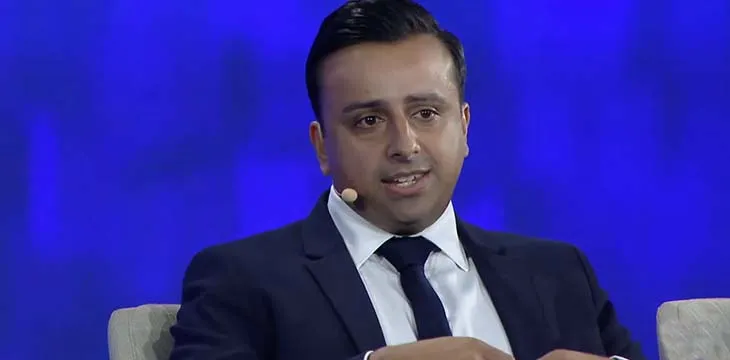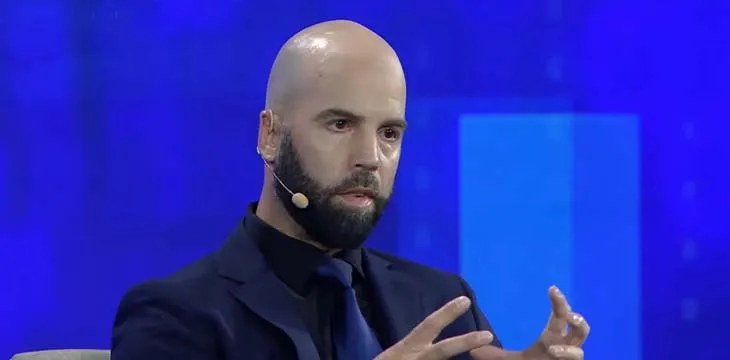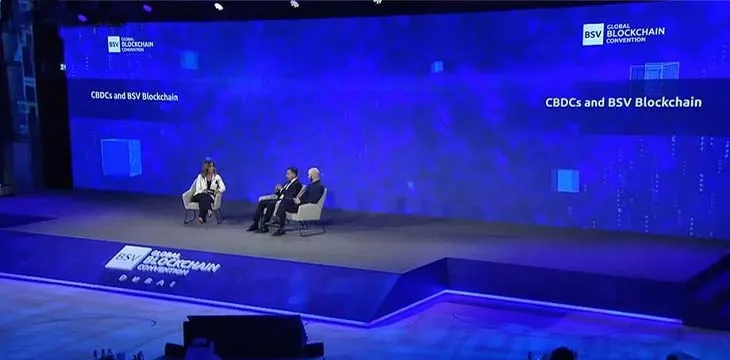|
Getting your Trinity Audio player ready...
|
https://youtu.be/fERT3wrjAzk
In a recent report, the Bank for International Settlements (BIS) revealed that 9 out of 10 central banks globally are exploring central bank digital currencies (CBDCs), with about 50% either developing CBDCs or running advanced experiments. At the BSV Global Blockchain Convention, two seasoned experts in this field took the stage to discuss the need for CBDCs, their risks and the mitigation measures, why Bitcoin SV is the best network to deploy a CBDC on, and much more.
CBDCs were the focus of a panel discussion moderated by Ramia Farrage, a senior producer and presenter at Forbes Middle East. She was joined on stage by Simit Naik, the director of strategy at enterprise blockchain solutions firm nChain, and Lexington Blood, the President of RTCore Inc, a real-time, cloud-native, commercial and retail core banking system.

Lexington said they decided to partner with nChain as the latter has a “robust, high performance, cost-efficient and very scalable solution.”
“CBDCs are a form of digital central bank money,” Simit told the audience, adding that they can be retail or wholesale, depending on their use case.
CBDCs have become a ‘when,’ not an ‘if’ for central banks, the panelists pointed out. Over the past decade, banking has evolved, and it’s become much more personalized as users turn to digital platforms, mostly through their phones. As such, central banks have to catch up or risk falling behind in the digitized financial economy.
The panelists also sought to draw a distinction between CBDCs and stablecoin at a time when one of the biggest stablecoin projects, UST, crashed spectacularly to the ground after its algorithmic pegging mechanism failed.
“A CBDC is issued by a central bank and it’s a claim on central bank money. That form of money is going to be more secure and less prone to what happened with Terra LUNA,” Simit observed.

Stablecoins, on the other hand, can be issued by any entity as long as an asset supposedly backs them. They thus rely on the users’ trust in the central entity issuing the stablecoin, even though some of the largest stablecoin projects like Tether have shady dealings and have been charged and found guilty of financial crimes.
The panelists also sought to distinguish CBDCs and the existing electronic payment systems. CBDCs mirror cash in that they are a peer-to-peer payment method, while electronic money is account-based and relies on a central entity such as Visa or Apple Pay doing a debit/credit on two accounts.
CBDCs on BSV and why they differ among regions
The two panelists have been traveling worldwide and exploring CBDC solutions with various central banks. They have found in that time that while most central banks are pro-CBDC, their motivations vary.
In Africa and South America, these banks are mainly concerned with financial inclusion. To them, a CBDC is a tool that will ensure they avail financial services to every last citizen in an affordable and accessible way. In the West, these banks are mainly out to enhance the efficiency of their payment systems since most people already have a bank account.

Lexington further noted that in Africa and Latin America, local economies are hit harder by the global economic booms and busts. Central banks in these regions have a tougher time controlling monetary policy and, as such, are more interested in digitizing their money. CBDCs give them more direct control of the monetary system, giving them a firmer grip on monetary policy.
Most central banks have opted to develop their own private ledgers on which they deploy their CBDCs. But as Simit noted, Bitcoin SV is the best network to develop a CBDC on, and nChain is working with several apex banks to help them deploy their digital currencies on Bitcoin.
Scalability is key for CBDCs, with some countries like Nigeria targeting over 220 million people with its eNaira. CBDC payments must also be extremely cheap to foster nanopayments.
“BSV blockchain gives us scalability, [fees are] fractions of a cent, so we can introduce the ability to do micro and nanopayments. It’s global and distributed in nature so we can improve the resilience of the wider payment ecosystem,” Simit said.
Watch the BSV Global Blockchain Convention Dubai 2022 Day 1 here:
https://www.youtube.com/watch?v=ggbZ8YedpBE

 07-03-2025
07-03-2025 





